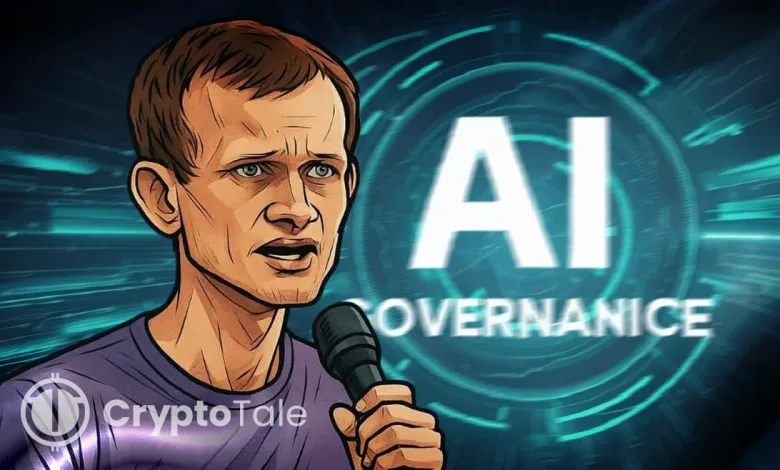Buterin Pushes Info Finance to Stop Exploits in AI Governance

- Vitalik warns that naive AI governance is vulnerable to manipulation and exploits.
- Info finance creates model diversity and quick corrections, making AI governance safer.
- Prediction markets and spot checks help secure AI decision-making and funding.
Ethereum co-founder Vitalik Buterin has warned that naive AI governance models pose serious risks and cautioned that frameworks relying on AI for funding or decision-making remain vulnerable to manipulation and exploits. In his view, such systems allow malicious actors to divert resources, however, he advocates for an approach called “info finance,” designed to build accountability and prevent misuse through markets, human oversight, and checks.
The Case Against Naive AI Governance
Buterin emphasized that naive AI governance is risky and added that if AI is used for allocating funds, people could manipulate it with prompts of their choice and gain money in surplus. He further elaborated that if models worked without any restrictions or guidelines, they could be mishandled, thus encouraging hackers to use prompts and trick AI into releasing wrong resources.
Such vulnerabilities put AI in a potentially dangerous loophole. Further, Buterin revealed systemic weaknesses, which, if left unchecked, could be manipulated. Unseen attacks, prompt injections are examples of how attackers can easily take advantage.
Info Finance as an Alternative
Buterin opts for information finance in place of naive governance, describing it as an “institution design” approach, blending open market competition with human verification. He said,
As an alternative, I support the info finance approach, where you have an open market where anyone can contribute their models, which are subject to a spot-check mechanism that can be triggered by anyone and evaluated by a human jury.
He outlined that Info Finance allows external contributors to integrate large language models (LLMs) without hardcoding one system. This will enable model diversity, thus reducing the chance of widespread failure. It also creates incentives for developers and speculators to watch closely for flaws and act quickly when problems occur.
One proposed mechanism involves prediction markets or decision markets. Multiple models would compete, and participants could stake on outcomes, signaling which models appear most reliable. Human juries or auditors would periodically spot-check results, particularly in high-stakes cases.
Related: ETH Treasuries Surge to $12B as Vitalik Warns of Leverage Risks
Implications for Crypto and Markets
Info finance relies on layered accountability, and it is notable in open competition, which allows faulty models to be challenged or replaced. Human oversight is added through juries and audits. Economic incentives disallow manipulation, while transparency makes malicious behavior visible.
By linking AI governance to blockchain and trading, Buterin suggests that flaws in centralized AI could increase interest in decentralized solutions, mostly built on Ethereum. Moreover, tokens like Render Network’s RNDR and The Graph’s GRT provide infrastructure for AI computations, thus gaining benefits from the development. Further, traders could also use ETH and the tokens for arbitrage amid market volatility.
On-chain data indicates that there are more ETH transactions associated with AI-related smart contracts and AI governance issues can impact tech stocks too, with firms like NVIDIA and Microsoft being involved in AI investments. On the whole, Buterin pointed out that Info Finance allows faster corrections, thus replacing faulty models and penalizing miscreants. He also added that jury checks and spot checks will prevent exploitation from spreading.




